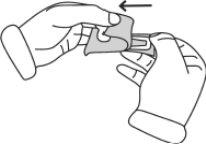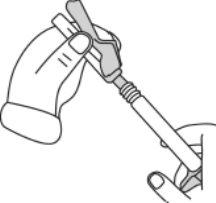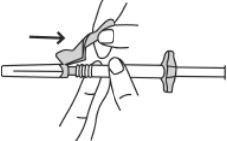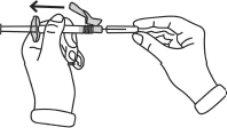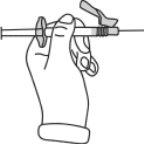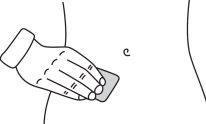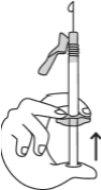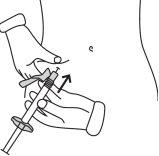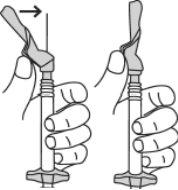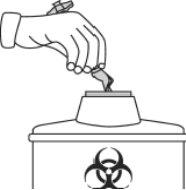
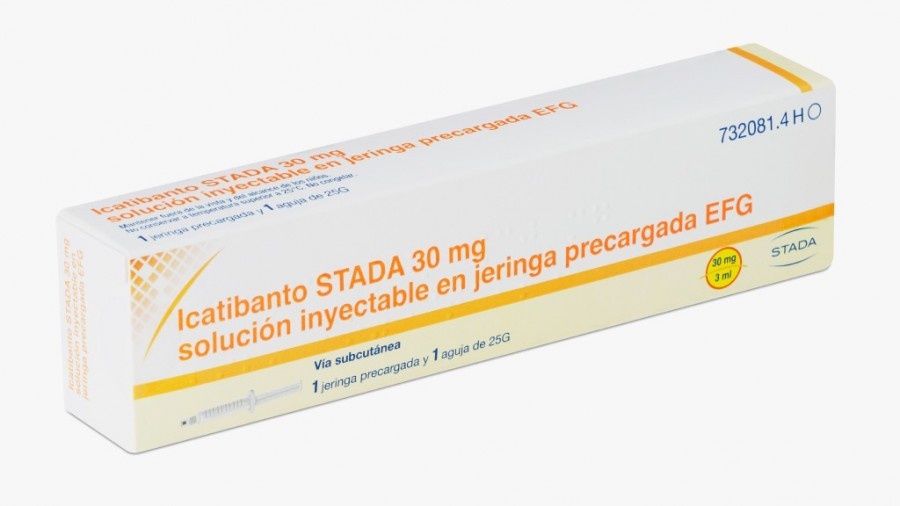
ICATIBANTO FRESENIUS 30 mg Injectable Solution in Pre-filled Syringe

Ask a doctor about a prescription for ICATIBANTO FRESENIUS 30 mg Injectable Solution in Pre-filled Syringe

How to use ICATIBANTO FRESENIUS 30 mg Injectable Solution in Pre-filled Syringe
Introduction
Package Leaflet: Information for the User
Icatibant Fresenius 30 mg solution for injection in pre-filled syringe EFG
Read all of this leaflet carefully before you start using this medicine because it contains important information for you.
- Keep this leaflet, you may need to read it again.
- If you have any further questions, ask your doctor or pharmacist.
- This medicine has been prescribed for you only. Do not pass it on to others. It may harm them, even if their symptoms are the same as yours.
- If you experience side effects, consult your doctor or pharmacist. This includes any possible side effects not listed in this leaflet. See section 4.
Contents of the package leaflet
- What is Icatibant Fresenius and what is it used for
- What you need to know before you use Icatibant Fresenius
- How to use Icatibant Fresenius
- Possible side effects
5 Storage of Icatibant Fresenius
- Contents of the pack and other information
1. What is Icatibant Fresenius and what is it used for
This medicine contains the active substance icatibant.
Icatibant is used to treat the symptoms of hereditary angioedema (HAE) in adults, adolescents, and children over 2 years of age.
In HAE, the levels of a substance present in the blood called bradykinin increase, producing symptoms such as swelling, pain, nausea, and diarrhea.
Icatibant blocks the activity of bradykinin and thus slows down the progression of the symptoms of an HAE attack.
2. What you need to know before you use Icatibant Fresenius
Do not use Icatibant Fresenius
- if you are allergic to icatibant or any of the other ingredients of this medicine (listed in section 6).
Warnings and precautions
Consult your doctor before starting treatment with Icatibant Fresenius:
- if you have angina pectoris (reduced blood flow to the heart)
- if you have recently had a stroke
The side effects related to Icatibant are similar to the symptoms of your own disease. Consult your doctor immediately if you notice that the symptoms of the attack worsen after Icatibant is administered.
In addition:
- You or your caregiver must learn the technique of subcutaneous injection (under the skin) before self-administering or having Icatibant administered by your caregiver.
- Immediately after self-administering Icatibant or having it administered by your caregiver while experiencing a laryngeal attack (upper airway obstruction), you should seek medical attention at a medical institution.
- If your symptoms do not resolve after a self-administered injection of Icatibant or an injection administered by your caregiver, you should consult your doctor about the administration of additional injections of Icatibant. In adult patients, up to 2 additional injections can be administered within 24 hours.
Children and adolescents
Icatibant is not recommended for use in children under 2 years of age or weighing less than 12 kg, as it has not been studied in these patients.
Other medicines and Icatibant Fresenius
Tell your doctor if you are taking, have recently taken, or might take any other medicines.
No interactions of Icatibant with other medicines are known. If you are taking any medicine that is an angiotensin-converting enzyme inhibitor (ACEI) (e.g., captopril, enalapril, ramipril, quinapril, lisinopril) to lower blood pressure or for any other reason, inform your doctor before using Icatibant.
Pregnancy and breastfeeding
If you are pregnant or breastfeeding, think you may be pregnant, or are planning to have a baby, ask your doctor for advice before taking this medicine.
If you are breastfeeding, you should not breastfeed your child during the 12 hours following the last administration of Icatibant.
C
Do not drive or use machines if you feel tired or dizzy as a result of the HAE attack or after using Icatibant Fresenius.
I
This medicine contains less than 23 milligrams (1 mmol) of sodium per dose, so it is essentially "sodium-free".
3. How to use Icatibant Fresenius
Follow the instructions for administration of this medicine exactly as indicated by your doctor.
In case of doubt, consult your doctor again.
If you have never been administered Icatibant before, the first dose should always be injected by medical or nursing staff. The doctor will discharge you when it is considered safe for you to go home. After analyzing it with your doctor or nurse and learning the technique for subcutaneous injections (under the skin), you or your caregiver can administer Icatibant if you have an HAE attack. It is essential to inject Icatibant subcutaneously (under the skin) as soon as you notice an angioedema attack. The healthcare staff will teach you and your caregiver how to safely inject Icatibant, following the instructions in the package leaflet.
When and how often should you use Icatibant Fresenius?
Your doctor has determined the exact dose of Icatibant and will tell you how often it should be used.
- The recommended dose of Icatibant is one injection (3 ml, 30 mg) administered subcutaneously (under the skin) as soon as you notice the angioedema attack (e.g., with increased skin swelling, especially on the face and neck, or increased abdominal pain).
- If you do not notice an improvement in symptoms after six hours, you should seek medical advice on the administration of additional injections of Icatibant. In adults, up to 2 additional injections can be administered within 24 hours.
- You should not receive more than 3 injections in a 24-hour period, and if you need more than 8 injections in a month, you should seek medical advice.
Children and adolescents from 2 to 17 years
- The recommended dose of Icatibant is an injection of 1 ml up to a maximum of 3 ml, depending on body weight, administered subcutaneously (under the skin) as soon as symptoms of an angioedema attack appear (e.g., increased skin swelling, especially on the face and neck, or increased abdominal pain).
- Consult the section on instructions for use to see the dose you should inject.
- If you are unsure about the dose to inject, consult your doctor, pharmacist, or nurse.
-.
¿
Icatibant Fresenius is administered by subcutaneous injection (under the skin). Each syringe should only be used once.
Icatibant Fresenius is injected with a short needle into the fatty tissue under the skin of the abdomen (belly). If you have any further questions on the use of this medicine, ask your doctor or pharmacist.
The following step-by-step instructions are intended for
- self-administration (adults)
- administration by a caregiver or healthcare professional for adults, adolescents, or children over 2 years of age (weighing at least 12 kg).
The instructions include the following main steps:
- General information
2a) Preparation of the syringe for children and adolescents (2-17 years) weighing 65 kg or less
2b) Preparation of the syringe and needle for injection (all patients)
- Preparation of the injection site
- Injection of the solution
- Disposal of injection materials
Step-by-step instructions for injection
| |||||||||||||||
| |||||||||||||||
2a) Preparation of the syringe for children and adolescents (2-17 years) weighing 65 kg or less: | |||||||||||||||
Important information for healthcare professionals and caregivers: When the dose is less than 30 mg (3 ml), the following equipment is needed to extract the appropriate dose (see information below):
The required injection volume in ml should be prepared in an empty 3 ml graduated syringe (see table below).Table 1: Dosage guidelines for children and adolescents
Patient weighing more than 65 kgwill use the entire contents of the pre-filled syringe (3 ml).
If you are unsure about the volume of solution to extract, consult your doctor, pharmacist, or nurse
Avoid touching the ends of the connector and the tips of the syringes to prevent contamination
Transfer the icatibant solution to the graduated syringe
If there is air in the graduated syringe:
| |||||||||||||||
2b) Preparation of the syringe and needle for injection: All patients (adults, adolescents, and children) | |||||||||||||||
| |||||||||||||||
| |||||||||||||||
| |||||||||||||||
| |||||||||||||||
| |||||||||||||||
| |||||||||||||||
| |||||||||||||||
| |||||||||||||||
|
4. Possible side effects
Like all medicines, this medicine can cause side effects, although not everybody gets them. Almost all patients who receive Icatibant notice a reaction at the injection site (such as skin irritation, inflammation, pain, itching, redness of the skin, and burning). These effects are usually mild and improve without the need for any additional treatment.
Very common (may affect more than 1 in 10 people):
Additional reactions at the injection site (feeling of pressure, bruising, decreased sensitivity and/or numbness, increased skin rash with itching and heat).
Common (may affect up to 1 in 10 people):
Nausea
Headache
Dizziness
Fever
Itching
Rash
Redness of the skin
Abnormal liver function tests
Frequency not known (cannot be estimated from the available data):
Hives (urticaria)
Tell your doctor immediately if you notice that the symptoms of the attack worsen after receiving Icatibant.
If you experience side effects, consult your doctor or pharmacist, even if they are not listed in this leaflet.
Reporting of side effects
If you experience any side effects, consult your doctor or pharmacist. This includes any possible side effects not listed in this leaflet. You can also report them directly through the Spanish Pharmacovigilance System for Human Use Medicines: www.notificaRAM.es
By reporting side effects, you can help provide more information on the safety of this medicine.
5. Storage of Icatibant Fresenius
Keep this medicine out of the sight and reach of children.
Do not use this medicine after the expiry date which is stated on the carton and the pre-filled syringe after “EXP”. The expiry date refers to the last day of the month stated.
Do not store above 30°C. Do not freeze.
Use immediately after opening and only in undamaged containers. For single use only.
Do not use this medicine if you notice that the syringe or needle is damaged or if you notice visible signs of deterioration, such as the solution being turbid, containing floating particles, or a change in the color of the solution.
Medicines should not be disposed of via wastewater or household waste. Ask your pharmacist how to dispose of the containers and any unused medicines. This will help protect the environment.
6. Package Contents and Additional Information
Composition of Icatibant Fresenius
The active substance is icatibant. Each pre-filled syringe contains 30 milligrams of icatibant (as acetate). Each milliliter of solution contains 10 mg of icatibant. The other ingredients are sodium chloride, glacial acetic acid, sodium hydroxide, and water for injectable preparations.
Appearance and Package Contents of the Product
Icatibant Fresenius is presented as a clear and colorless injectable solution in a pre-filled syringe.
3 ml of solution in a 3 ml pre-filled syringe (Type I glass) with a plunger stopper (bromobutyl rubber coated with fluorocarbon polymer). The package includes a 25 G, 16 mm safety hypodermic needle.
Single unit package of one pre-filled syringe with one needle or multiple package of three pre-filled syringes with three safety needles.
Only certain package sizes may be marketed.
Marketing Authorization Holder
Fresenius Kabi España, S.A.U.
Torre Mapfre-Vila Olímpica
C/Marina 16-18
08005 Barcelona
Spain
Manufacturer
Fresenius Kabi Austria GmbH
Hafnerstraße 36
8055 Graz
Austria
This medicine is authorized in the Member States of the European Economic Areaand in the United Kingdom (Northern Ireland)under the following names:
Member State Name | Medicine Name |
Austria | Icatibant Fresenius 30 mg Injektionslösung in einer Fertigspritze |
Belgium | Icatibant Fresenius 30 mg oplossing voor injectie in een voorgevulde spuit, solution injectable en seringue pré-remplie, Injektionslösung in einer Fertigspritze |
Croatia | Ikatibant Fresenius 30 mg otopina za injekciju u napunjenoj štrcaljki |
Czech Republic | Icatibant Fresenius |
Denmark | Icatibant Fresenius |
Estonia | Icatibant Fresenius |
Finland | Icatibant Fresenius 30 mg injektioneste, liuos, esitäytetty ruisku |
France | ICATIBANT FRESENIUS 30 mg, solution injectable en seringue préremplie |
Germany | Icatibant Fresenius 30 mg Injektionslösung in einer Fertigspritze |
Hungary | Icatibant Fresenius 30 mg oldatos injekció eloretöltött fecskendoben |
Ireland | Icatibant 30 mg solution for injection in pre-filled syringe |
Italy | Icatibant Fresenius |
Latvia | Icatibant Fresenius 30 mg šķidums injekcijām pilnšļirce |
Lithuania | Icatibant Fresenius 30 mg injekcinis tirpalas užpildytame švirkšte |
Netherlands | Icatibant Fresenius 30 mg, oplossing voor injectie in een voorgevulde spuit |
Norway | Icatibant Fresenius |
Poland | Icatibant Fresenius |
Portugal | Icatibant Fresenius |
Slovakia | Icatibant Fresenius 30 mg |
Spain | Icatibanto Fresenius 30 mg solución inyectable en jeringa precargada EFG |
Sweden | Icatibant Fresenius 30 mg injektionsvätska, lösning i förfylld spruta |
United Kingdom (Northern Ireland) | Icatibant 30 mg solution for injection in pre-filled syringe |
Date of the last revision of this leaflet: April2022
Detailed information on this medicine is available on the website of the Spanish Agency for Medicines and Health Products (AEMPS), http://www.aemps.gob.es/
- Country of registration
- Active substance
- Prescription requiredYes
- Manufacturer
- This information is for reference only and does not constitute medical advice. Always consult a licensed doctor before taking any medication. Oladoctor is not responsible for medical decisions based on this content.
- Alternatives to ICATIBANTO FRESENIUS 30 mg Injectable Solution in Pre-filled SyringeDosage form: INJECTABLE, 30 mgActive substance: icatibantManufacturer: Takeda Pharmaceuticals International Ag Ireland BranchPrescription requiredDosage form: INJECTABLE, 30 mgActive substance: icatibantManufacturer: Accord Healthcare S.L.U.Prescription requiredDosage form: INJECTABLE, 30 mgActive substance: icatibantManufacturer: Laboratoire AguettantPrescription required
Alternatives to ICATIBANTO FRESENIUS 30 mg Injectable Solution in Pre-filled Syringe in other countries
The best alternatives with the same active ingredient and therapeutic effect.
Alternative to ICATIBANTO FRESENIUS 30 mg Injectable Solution in Pre-filled Syringe in Poland
Alternative to ICATIBANTO FRESENIUS 30 mg Injectable Solution in Pre-filled Syringe in Ukraine
Online doctors for ICATIBANTO FRESENIUS 30 mg Injectable Solution in Pre-filled Syringe
Discuss dosage, side effects, interactions, contraindications, and prescription renewal for ICATIBANTO FRESENIUS 30 mg Injectable Solution in Pre-filled Syringe – subject to medical assessment and local rules.




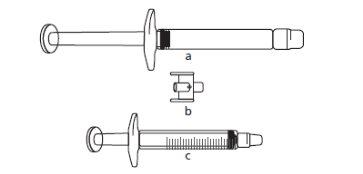 Graduated syringe 3 ml
Graduated syringe 3 ml


 To initiate the transfer of the icatibant solution, push the plunger of the pre-filled syringe (on the left end of the image below).
To initiate the transfer of the icatibant solution, push the plunger of the pre-filled syringe (on the left end of the image below).

